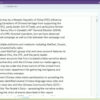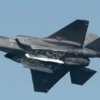Alternative Names:
HuM, Harkat-ul-Mujahideen-al-Islami (HuJI; predecessor), Al-Faran, Al-Hadid, Al-Hadith, Harkat-ul-Mujahideen, Harakat ul-Mujahideen, Harakat al- Mujahideen, Harkat-ul-Ansar, Harakat ul-Ansar, Harakat al-Ansar, Harkat-ul-Jehad-e-Islami, Harkat Mujahideen, Harakat-ul-Mujahideen al-Almi, Holy Warriors Movement, Movement of the Mujahideen, Movement of the Helpers, Movement of Islamic Fighters, Al Qanoon, Jamiat ul-Ansar
Location:
Pakistani Kashmir
Leadership:
HuM was founded in 1985 by Fazlur Rehman Khalil, a graduate of the Jamia Uloom-ul-Islamia Islamic school in Karachi, Pakistan, as a splinter group of Harkat-ul-Jihad al-Islami (HuJI). Khalil lead HuM until 2000 when he ceded control of the group to his second-in-command, Farooq Kashmiri. Thereafter, Khalil assumed the post of Secretary General.
In 1993, HuM merged with HuJI to form Harkat-ul-Ansar. However, Harkat al-Ansar was reorganized once again as HuM following the kill or capture of several high-ranking Harkat-ul-Ansar leaders.
HuM’s leadership includes several senior ranking al-Qaeda operatives, including Omar Saeed Sheikh. HuM is part of Osama bin Laden’s “Islamic World Front for the struggle against Jews and Crusaders”. Khalil signed bin Laden’s fatwa in 1998 calling for attacks on the US and the West.
Membership:
HuM lost a substantial portion of its membership in defections to rival jihadi group Jaish-e-Mohammad in 2000. As of 2000, HuM has several hundred armed supporters based in Pakistani Kashmir, mostly of Pakistani and Afghan descent, whereas prior to 2000 the group’s armed membership numbered in the thousands.
Funding Sources:
HuM is thought to receive funding, logistical, and tactical support from Pakistan’s Inter-Services Intelligence (ISI), which the HuM uses to carry out attacks against Indian security forces and civilians in Jammu and Kashmir. HuM’s attacks against US security forces in the region are limited.
HuM is also connected to a regional network of wealthy and grassroots donors in Pakistan, Kashmir, and Saudi Arabia.
Origins:
HuM is an offshoot of Harkat-ul-Jihad-al-Islami, a jihadi group formed in 1980 to combat the Soviet occupation of Afghanistan.
Major Attacks:
December 1999: HuM is alleged to have hijacked Indian Airlines flight 814 from Nepal and forced the plane to land in Kandahar, Afghanistan.
February 2002: HuM abducted and executed American journalist, Daniel Pearl.
Ideological Roots:
HuM’s traces its ideological roots to a radical interpretation of Sunni Islam, similar to Wahhabism and the Deoband school of thought. The group’s extremist ideology extends to a strict adherence to Islamic law and runs counter to western democracy.
Objectives:
HuM’s primary objective is to establish Pakistani rule of Indian Kashmir, and to carry out attacks against India and the United States.
Tactics:
Kidnapping, jailbreaking, hijacking (commercial airliners), rocket and mortar attacks, and firearm attacks.
Updated on January 13, 2016.







